1. The Constitution (One Hundred and Thirtieth Amendment) Bill, 2025 – Polity
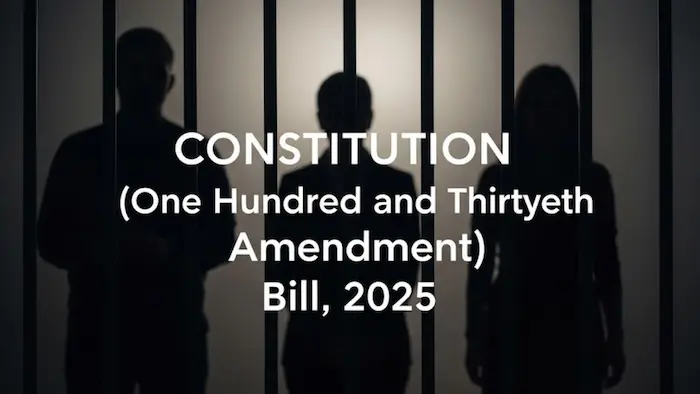
Why in News?
The Constitution (One Hundred and Thirtieth Amendment) Bill, 2025 was introduced in the Lok Sabha on August 20, 2025, aiming to increase accountability among political leaders, especially in light of growing public concern over the criminalization of politics in India.
What Does the Bill Propose?
- The Bill seeks automatic removal of:
- Ministers,
- Chief Ministers, and
- The Prime Minister,
if they are held in judicial custody for more than 30 consecutive days due to serious criminal charges.
Relevant Constitutional Provisions
The Bill builds upon:
- Article 75 – Appointment of Prime Minister and other ministers by the President.
- Article 164 – Appointment of Chief Ministers and other ministers at the state level.
- Article 239AA – Special provisions with respect to the National Capital Territory of Delhi.
These articles currently provide discretion to the President/Governor regarding ministerial appointments and removals, which the Bill seeks to limit through automatic disqualification.
Legal & Political Context
Landmark Case Reference:
- S.R. Bommai v. Union of India (1994)
- Reinforced the idea of constitutional morality in governance.
- Highlighted the need for accountability in public office.
Presumption of Innocence:
- One of the main criticisms is that the Bill undermines Article 21 (Right to Life and Liberty) by allowing removal without conviction.
- Detention ≠ Guilt – Critics argue this violates the fundamental principle of ‘innocent until proven guilty’.
Risk of Political Misuse:
- The dual mechanism for removal could be selectively applied, potentially becoming a tool for political vendetta.
- Lack of uniform safeguards may encourage manipulation of the judicial process to disqualify rivals.
Reappointment Loophole:
- Possibility of frequent reappointments once custody ends could result in a revolving door situation.
- This could create instability in governance and weaken administrative continuity.
Key Issues & Debates
| Issue | Explanation |
|---|---|
| Accountability vs. Rights | The Bill tries to promote clean governance, but risks infringing on fundamental rights. |
| Uniformity | Disparate treatment of legislators and ministers can raise constitutional inconsistencies. |
| Judicial Milestones | Critics suggest disqualification should occur after framing of charges, not mere detention. |
Exam Connect – Possible Questions
Prelims
1. Which of the following Articles of the Indian Constitution are relevant to the appointment and removal of Ministers?
A. Articles 74, 155, 263
B. Articles 75, 164, 239AA
C. Articles 124, 217, 231
D. Articles 110, 112, 117
Answer: B. Articles 75, 164, 239AA
2. The principle of ‘constitutional morality’ was emphasized in which of the following landmark cases?
A. Kesavananda Bharati v. State of Kerala
B. S.R. Bommai v. Union of India
C. Maneka Gandhi v. Union of India
D. Indra Sawhney v. Union of India
Answer: B. S.R. Bommai v. Union of India
Mains
1. Critically examine the provisions of the Constitution (One Hundred and Thirtieth Amendment) Bill, 2025, in the context of criminalization of politics and constitutional morality.
2. Do you think automatic disqualification of Ministers based on judicial custody violates the principle of ‘presumption of innocence’? Discuss with reference to fundamental rights under the Indian Constitution.
2. DRDO Tests Indigenous Air Defence System – Defence & Security
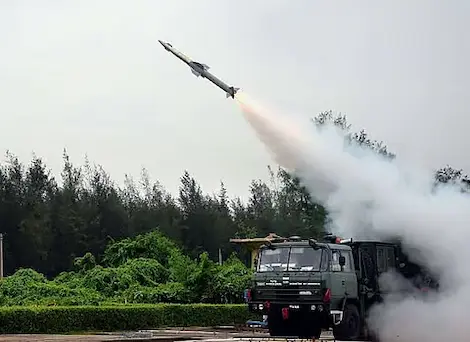
Why in News?
The Ministry of Defence announced the successful inaugural flight test of the Integrated Air Defence Weapon System (IADWS) developed by DRDO.
The test, conducted off the coast of Odisha, marked a major step forward in strengthening India’s indigenous air defence capabilities, with the system neutralizing three aerial targets at various altitudes and ranges.
What is the Integrated Air Defence Weapon System (IADWS)?
The IADWS is a comprehensive air defence solution integrating missiles and directed energy weapons to neutralize aerial threats like:
- Fighter aircraft
- Drones and UAVs
- Swarm drones
- Cruise missiles
It showcases India’s move towards a layered, multi-domain defence architecture, aligning with the Atmanirbhar Bharat initiative in defence.
Components of IADWS
| Component | Description | Range |
|---|---|---|
| QRSAM (Quick Reaction Surface-to-Air Missile) | Designed to protect moving Army formations from aerial attacks. Radar-guided, high-speed response. | 3 – 30 km |
| VSHORADS (Very Short Range Air Defence System) | Fourth-generation, man-portable air defence (MANPAD) system. Effective against drones and helicopters. | 300 m – 6 km |
| DEW (Directed Energy Weapon) | Laser-based weapon to destroy UAVs and swarm drones. Operational at short range, rapid response. | < 3 km |
Strategic Importance of the Test
- Multi-layered Defence: IADWS enables simultaneous engagement of multiple threats, enhancing battlefield effectiveness.
- Rapid Reaction: Designed to operate in dynamic and fast-evolving combat environments.
- Indigenization Push: Reduces India’s dependency on imported air defence systems (like the S-400).
- Future Integration: Forms part of broader strategic plans like Mission Sudarshan Chakra, which aims to create an integrated multi-domain air defence grid.
Exam Connect – Possible Questions
Prelims
1. The Integrated Air Defence Weapon System (IADWS) recently tested by DRDO includes which of the following components?
A. QRSAM, VSHORADS, and DEW
B. Akash Missile, Agni-V, and Prithvi Missile
C. QRSAM, BrahMos, and Astra
D. Pinaka, Prahar, and Nag
Answer: A. QRSAM, VSHORADS, and DEW
2. The laser-based Directed Energy Weapon (DEW), part of IADWS, is primarily used to:
A. Target underground bunkers
B. Destroy swarm drones and UAVs
C. Detect enemy submarines
D. Jam enemy radar systems
Answer: B. Destroy swarm drones and UAVs
Mains
1. Examine the significance of the Integrated Air Defence Weapon System (IADWS) in strengthening India’s air defence architecture. How does it align with the goals of self-reliant defence production?
2. Discuss the role of Directed Energy Weapons (DEWs) in modern warfare. Evaluate India’s progress in developing such technologies.
3. Nepal Officially Joins IBCA – International Relations
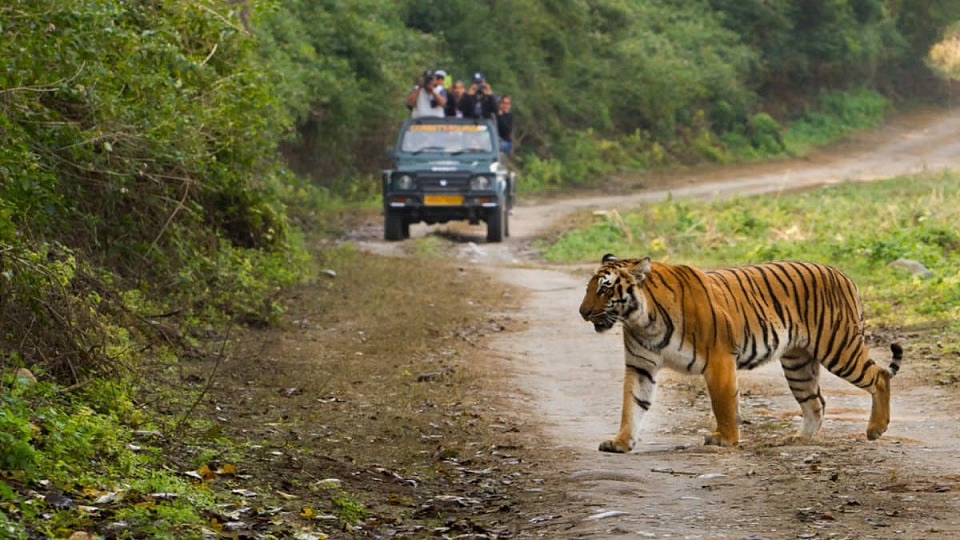
Why in News?
In a notable step toward regional environmental cooperation, Nepal has officially joined the International Big Cat Alliance (IBCA) — a global conservation initiative led by India to protect big cat species and their habitats.
What is the International Big Cat Alliance (IBCA)?
The IBCA is a multilateral alliance launched by India in April 2023, during the 50th anniversary of Project Tiger. It brings together countries committed to the conservation of seven big cat species and their ecosystems.
Key Features of IBCA
| Aspect | Details |
|---|---|
| Launched by | India (2023), during Project Tiger@50 event |
| Headquarters | India |
| Membership | 95+ countries across Asia, Africa, Europe, and the Americas |
| Governance | Managed by a General Assembly, an elected Council, and a Secretariat led by a Secretary-General |
| India’s Role | Host to 5 of the 7 big cat species; major funding and leadership contributor |
Species Covered under IBCA
- Tiger
- Lion
- Leopard
- Snow Leopard
- Cheetah
- Jaguar
- Puma
Functions and Goals of IBCA
- Conservation: Protect and restore big cat habitats.
- Conflict Mitigation: Reduce human-wildlife conflicts by promoting coexistence strategies.
- Eco-Tourism: Encourage sustainable tourism to generate revenue for conservation.
- Knowledge-Sharing: Facilitate exchange of research, data, and best practices among member nations.
- Funding & Resource Mobilization: India has committed ₹150 crore for 2023–2028.
Significance of Nepal’s Membership
- Strengthens transboundary cooperation in the Himalayan and Terai regions, vital for species like the tiger and snow leopard.
- Reinforces India-Nepal environmental diplomacy, creating shared platforms for data exchange, forest management, and species migration corridors.
- Boosts regional biodiversity frameworks and positions South Asia as a leader in conservation.
Exam Connect – Possible Questions
Prelims
1. The International Big Cat Alliance (IBCA) was launched by:
A. United Nations Environment Programme
B. World Wide Fund for Nature
C. Government of India
D. SAARC Secretariat
Answer: C. Government of India
2. Which of the following species is not part of the International Big Cat Alliance’s conservation list?
A. Tiger
B. Lion
C. Panther
D. Jaguar
Answer: C. Panther
Mains
1. Examine the role of India in promoting global environmental diplomacy through initiatives like the International Big Cat Alliance (IBCA). How does it reflect India’s soft power?
2. Discuss the strategic and ecological implications of Nepal joining the International Big Cat Alliance. How can regional cooperation improve wildlife conservation efforts?
4. 14th Edition of Exercise Maitree – International Relations
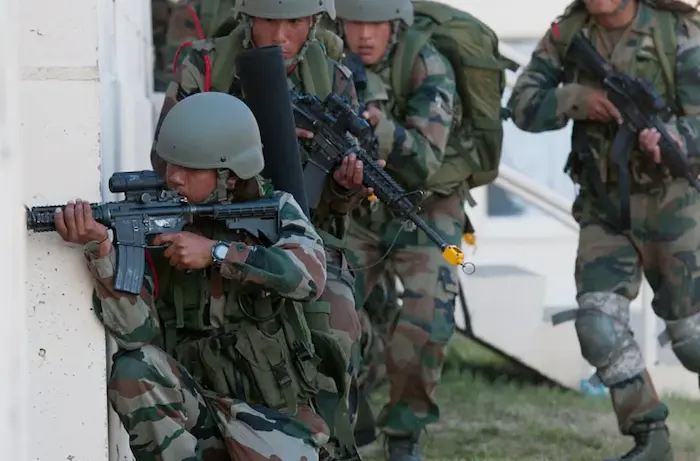
Why in News?
The 14th edition of Exercise Maitree, a joint military exercise between India and Thailand, is scheduled to be held in Umroi, Meghalaya from September 1 to 14, 2025.
This marks a resumption of the exercise in India after a five-year gap, highlighting renewed momentum in bilateral defence cooperation.
What is Exercise Maitree?
Exercise Maitree is a bilateral military exercise between the Indian Army and the Royal Thai Army.
It aims to:
- Enhance joint operational readiness
- Facilitate the exchange of tactical knowledge
- Strengthen defence diplomacy between the two nations
Key Highlights of the 14th Edition (2025)
| Aspect | Details |
|---|---|
| Location | Umroi, Meghalaya, India |
| Dates | September 1–14, 2025 |
| Focus | Counter-terrorism operations in semi-urban terrain |
| Troop Participation | Equal participation from both nations |
| Significance | First time hosted in India since the last edition in 2019 (Tak Province, Thailand) |
Context & Background
- Previous Edition (2019):
- Held in Tak Province, Thailand
- Involved 76 troops from each side
- Featured Ladakh Scouts (India) and the 1st Battalion of the 14th Infantry Regiment (Thailand)
- Security Objective: Focus on joint tactical drills, urban warfare, and anti-terror operations, especially relevant given the rise of hybrid threats in the Indo-Pacific.
- Strategic Relevance: Supports India’s Act East Policy and Indo-Pacific security cooperation by strengthening defence ties with Southeast Asia.
India–Thailand Defence Cooperation
- Shared Maritime Interests in the Andaman Sea and Strait of Malacca
- Participation in other multilateral exercises like MILAN and ADMM+
- Regular high-level military exchanges and dialogues
Exam Connect – Possible Questions
Prelims
1. Exercise Maitree is a joint military exercise between India and which of the following countries?
A. Vietnam
B. Indonesia
C. Thailand
D. Myanmar
Answer: C. Thailand
2. The 14th edition of Exercise Maitree in 2025 is scheduled to take place in:
A. Tak Province, Thailand
B. Leh, India
C. Umroi, Meghalaya
D. Chennai, Tamil Nadu
Answer: C. Umroi, Meghalaya
Mains
1. Discuss the strategic significance of bilateral military exercises like Exercise Maitree in enhancing India’s Act East Policy. How do such initiatives contribute to regional stability?
2. India’s growing military engagements in Southeast Asia reflect its changing role in the Indo-Pacific. Examine the importance of defence diplomacy in India–Thailand relations.
5. Jan Vishwas 2.0 – Towards Trust-Based Governance – Polity
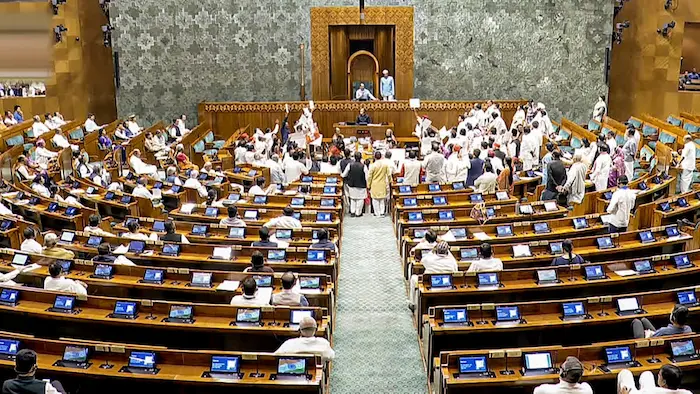
Why in News?
The Jan Vishwas (Amendment of Provisions) Bill, 2025 was recently introduced in the Lok Sabha.
It builds upon the Jan Vishwas Act, 2023, which had already decriminalized 183 provisions across 42 Acts.
The 2025 Bill seeks to further this reform by amending 16 Central Acts across 10 ministries, aiming to decriminalize minor offences and simplify compliance.
Key Features of the Jan Vishwas Bill 2025
| Aspect | Details |
|---|---|
| Objective | Promote trust-based governance, reduce over-criminalization |
| Scope | Amends 355 provisions across laws like the RBI Act, 1934, and Drugs & Cosmetics Act, 1940 |
| Approach | Removes imprisonment clauses for minor infractions and replaces them with monetary penalties |
| Targeted Impact | 288 provisions directly aimed at enhancing Ease of Doing Business |
Understanding Over-Criminalization in Indian Laws
- As per Vidhi Centre for Legal Policy:
- India has 882 central laws, out of which 370 contain criminal provisions.
- These define 7,305 distinct offences, many of which are non-core (e.g. shipping, environment, agriculture).
- Example: Milking a cow on a public road can lead to arrest — a clear case of disproportionate punishment.
Implications for Business & Governance
- Entrepreneurial Burden:
- Over 50% of business-related laws include imprisonment, creating fear and discouraging innovation.
- Judicial Backlog:
- India’s district courts have 3.6 crore pending criminal cases.
- Many relate to minor violations, causing delays in justice for serious crimes.
- Administrative Efficiency:
- Decriminalizing such provisions will reduce red tape, boost compliance, and foster trust in government institutions.
Key Reform Measures Introduced
| Previous Framework | Post-Reform Approach |
|---|---|
| Criminal penalties for minor lapses | Monetary fines or warnings |
| Arrests for procedural violations | Civil penalties only |
| One-size-fits-all punitive model | Graded penalties (e.g. warning for first-time offence) |
Philosophical and Policy Underpinning
- Guided by the motto: “Minimum Government, Maximum Governance”
- Aligned with:
- Ease of Doing Business
- Make in India
- Startup India
- Seeks to create a compliance-based culture, rather than a fear-driven one
Exam Connect – Possible Questions
Prelims
1. The Jan Vishwas (Amendment of Provisions) Bill, 2025 aims to:
A. Expand the jurisdiction of High Courts
B. Amend the Constitution for cooperative federalism
C. Decriminalize minor offences and ease regulatory compliance
D. Introduce mandatory arbitration for business disputes
Answer: C. Decriminalize minor offences and ease regulatory compliance
2. As per the Vidhi Centre for Legal Policy, what percentage of central laws with criminal provisions regulate areas outside core criminal law?
A. 25%
B. 50%
C. 60%
D. 75%
Answer: D. 75%
Mains
1. Over-criminalization of economic and regulatory offences creates inefficiencies in the justice system and discourages business activity. Discuss in the context of the Jan Vishwas (Amendment of Provisions) Bill, 2025.
2. “Trust-based governance is essential for a citizen-friendly and business-friendly India.” Critically analyse how the Jan Vishwas reforms contribute to this vision.
6. Mudumalai Tiger Reserve (MTR) – Environment
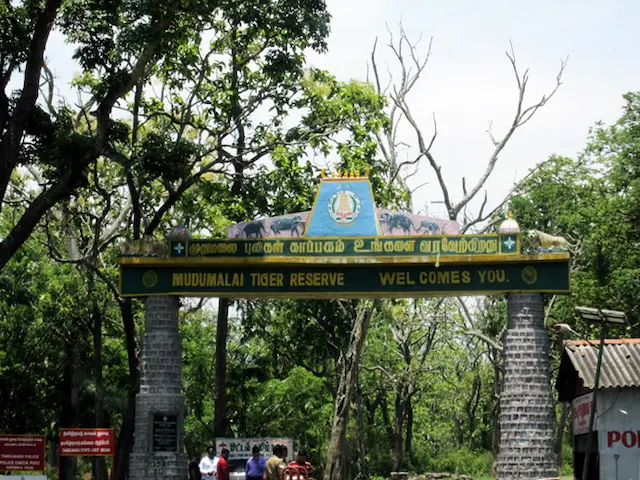
Why in News?
A 12-year-old tigress in the Singara forest range of the Mudumalai Tiger Reserve (MTR) recently passed away after being spotted in an unwell condition near the forest boundary.
The incident has drawn attention to wildlife conservation, health monitoring of apex predators, and the ecological significance of MTR.
About Mudumalai Tiger Reserve (MTR)
| Feature | Details |
|---|---|
| Location | Nilgiris District, Tamil Nadu |
| Area | 321 sq. km |
| Part of | Nilgiri Biosphere Reserve – the first Biosphere Reserve in India (designated in 1986) |
| Tri-junction State Link | Lies at the junction of Tamil Nadu, Karnataka, and Kerala |
| Elevation | 960m to 1266m, contributing to high ecological variation |
| Notable Landmark | Theppakadu Elephant Camp, featured in Oscar-winning documentary The Elephant Whisperers |
Ecological and Geographical Importance
Terrain and Forest Types
MTR encompasses:
- Tropical evergreen forests
- Moist deciduous forests
- Dry teak forests
- Secondary grasslands
- Swamps
This diversity of ecosystems supports a wide range of flora and fauna, making it an important biodiversity hotspot.
Flora Highlights
- “Elephant Grass” – tall grass species suitable for herbivores.
- Valuable timber trees – Teak, Rosewood.
- Wild relatives of cultivated crops – e.g. wild rice, turmeric, cinnamon, and ginger – important for genetic diversity and climate resilience in agriculture.
Fauna Highlights
- Large mammals: Elephants, Gaurs, Sambars, Spotted Deer, Blackbucks, Wild Pigs
- Carnivores: Tigers, Leopards, Wild Dogs
- Endangered and endemic species
- Avifauna: Hosts around 8% of India’s bird species
Conservation Significance
- MTR serves as a crucial wildlife corridor within the Western Ghats landscape, facilitating gene flow between animal populations in neighboring reserves such as:
- Bandipur (Karnataka)
- Wayanad (Kerala)
- Sathyamangalam (TN)
- It plays a critical role in the Project Tiger initiative, contributing to tiger population stability in southern India.
- MTR also demonstrates the interplay between conservation and community involvement, making it a potential model for community-based forest management.
Exam Connect – Possible Questions
Prelims
1. Mudumalai Tiger Reserve is located at the tri-junction of which three Indian states?
A. Tamil Nadu, Karnataka, Andhra Pradesh
B. Kerala, Tamil Nadu, Andhra Pradesh
C. Karnataka, Kerala, Tamil Nadu
D. Karnataka, Tamil Nadu, Telangana
Answer: C. Karnataka, Kerala, Tamil Nadu
2. Which of the following flora species is not commonly found in the Mudumalai Tiger Reserve?
A. Teak
B. Rosewood
C. Deodar
D. Elephant Grass
Answer: C. Deodar
Mains
1. Highlight the ecological importance of the Mudumalai Tiger Reserve in the context of biodiversity and wildlife conservation. How does it contribute to India’s Project Tiger initiative?
2. Discuss the role of biosphere reserves like the Nilgiri Biosphere Reserve in promoting ecological sustainability and local livelihood security.
7. Integrated Food Security Phase Classification (IPC) – International Relations

Why in News?
A recent IPC analysis has revealed that over 500,000 individuals in Gaza are experiencing famine-like conditions, marked by severe starvation, malnutrition, and preventable deaths.
This crisis brings global attention to the role and significance of the IPC system in assessing food insecurity and guiding humanitarian responses.
What is the IPC?
The Integrated Food Security Phase Classification (IPC) is a global framework used to:
- Assess food insecurity severity
- Provide standardized classifications
- Support evidence-based humanitarian decisions
Supported by:
- 19 major humanitarian and development organizations, including:
- FAO
- WFP
- UNICEF
- USAID
- EU agencies
- Regional bodies in Africa, Asia, and Latin America
IPC’s Five-Phase Food Insecurity Classification
| Phase | Classification | Implications |
|---|---|---|
| 1 | Minimal | Households can meet essential food and non-food needs |
| 2 | Stressed | Food consumption is minimally adequate; livelihoods at risk |
| 3 | Crisis | Food consumption gaps; urgent support needed |
| 4 | Emergency | Large food consumption gaps and high acute malnutrition |
| 5 | Famine | Catastrophic hunger, extreme mortality, and starvation |
Famine Criteria under IPC (Phase 5)
To classify a situation as famine, all three conditions must be met:
- At least 20% of the population faces extreme food shortages.
- At least 30% of children suffer from acute malnutrition.
- At least 2 people per 10,000 per day die due to hunger, disease, or malnutrition.
Note: The IPC itself does not formally declare famine but provides the analytical framework for governments or UN bodies to make that declaration.
IPC Assessment Tools
IPC assessments are conducted across three standardized scales:
- IPC Acute Food Insecurity
- IPC Chronic Food Insecurity
- IPC Acute Malnutrition
These allow for real-time and long-term planning in humanitarian response.
Exam Connect – Possible Questions
Prelims
1. The Integrated Food Security Phase Classification (IPC) is:
A. A UN treaty on agricultural subsidies
B. A classification system for soil quality
C. A global standard for assessing food insecurity severity
D. An index used by the IMF to measure inflation
Answer: C. A global standard for assessing food insecurity severity
2. Which of the following is not one of the three scales used by IPC for assessment?
A. IPC Acute Food Insecurity
B. IPC Chronic Food Insecurity
C. IPC Agricultural Productivity
D. IPC Acute Malnutrition
Answer: C. IPC Agricultural Productivity
Mains
1. What is the Integrated Food Security Phase Classification (IPC)? Examine its role in global humanitarian response, especially in conflict zones like Gaza.
2. Discuss how international tools like IPC can aid national governments in early warning, planning, and responding to food insecurity. What lessons can India draw?

